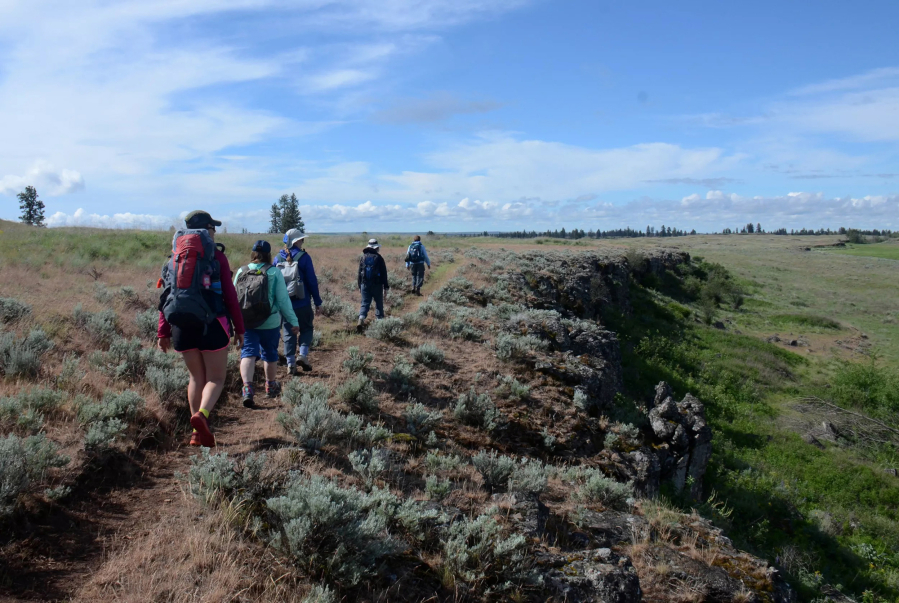SPOKANE — Outdoor recreation accounted for 2 percent of Washington’s total gross domestic product in 2020, according to a study released this month, while the outdoor recreation industry accounted for 2.8 percent of total employment and 2.1 percent of total compensation.
The study was published by Outdoorsy, an RV rental company using data from the Bureau of Economic Analysis.
It underscores that all types of outdoor recreation increased dramatically in 2020. In fact, 7.1 million more people headed outdoors and overall participation in outdoor recreation surpassed 52 percent for the first time on record, the Outdoor Industry Association said.
Washington land managers nod their heads when presented with this data.
But the question remains, will it last? And if it lasts, will it pay?
That’s important for the Washington Department of Fish and Wildlife, which saw a massive increase in fishing and hunting license sales as COVID-19 forced people outside.
Roughly a fourth of WDFW’s budget comes from fishing and hunting license sales. As fewer people hunt and fish in Washington, and nationwide, wildlife agencies have scrambled to find new sources of revenue.
Last year bucked that trend.
From the start of the 2020 licensing year in May through Dec. 31, WDFW sold nearly 45,000 more fishing licenses and 12,000 more hunting licenses than 2019. The number of new license holders — defined as someone who hadn’t purchased one for the previous five years — went up 16 percent for fishing licenses and almost 40 percent for hunters.
That will not be the case for 2021, said Morgan Stinson, chief financial officer for the department.
“Now we are far enough along that we are starting to see what I think is a return to the mean,” he said. “It doesn’t look like this license year is going to be as good.”
Agency staff don’t know how many of the new hunters they will be able to retain, but Stinson isn’t optimistic.
“There is no way that we keep half of the exact people that showed up for the first time,” he said.
Fewer than 5 percent of Washingtonians hunt.
The WDFW, which is tasked with protecting, preserving and perpetuating Washington’s wildlife and ecosystems, doesn’t make money off most recreational uses, unless they are hunting or fishing. Hunting and fishing license fees haven’t increased since 2011 nor has the cost of a Discover Pass. As of the 2015-17 biennium, Discover Pass fees accounted for $3.6 million of WDFW’s budget.
Stinson said that calls into question the entire model, known as the North American Model of Wildlife Conservation. That model has been largely successful, making once-endangered species, like deer and elk, plentiful. The model, however, largely relies on fishing and hunting license sales to fund state wildlife agencies, intentionally separating politics and biology. That model grew out of the excesses of market hunting and other practices which nearly led to the extinction of now-common species like elk and deer.
“We have this North American model, but it’s old and not keeping up with the relevancy piece of how people are using these lands,” he said.
The WDFW also gets money from two federal excise taxes on ammunition and fishing tackle, the Pittman-Robertson and the Dingell-Johnson acts. Stinson said those can be difficult to budget around because of their volatility.
“Pittman-Robertson is all over the place,” he said. “Because gun and ammunition sales respond politically.”
How to sustainably grow outdoor recreation in Washington is something Jon Snyder, Gov. Jay Inslee’s policy adviser on outdoor recreation and economic development, thinks about a lot.
“We have to be very deliberate and serious with how we plan and manage outdoor recreation,” he said. “We can’t manage outdoor recreation like it’s an amenity. Like it’s nice to have. It’s a must-have if your job depends on it. It’s a must-have if your mental health and physical health depends on it.”
The pandemic only “accelerated some trends” Snyder said, including increased permitting on public lands.
“The carrying capacity of our outdoor recreation infrastructure has to be taken into consideration,” he said.
The Great American Outdoors Act (which included permanent funding for the Land and Water Conservation Fund), was signed into law by President Donald Trump, providing some permanent funding for conservation.
But state wildlife agencies are still left with more work than they can handle. This summer’s wildfires only highlight the importance and challenge of the WDFW’s mandate to protect and perpetuate Washington’s wildlife and ecosystems.
In hopes of broadening support, the WDFW has started actively trying to recruit outdoor enthusiasts from beyond the traditional hunting and fishing population, Stinson said. All in an effort to broaden “our relevancy.”



